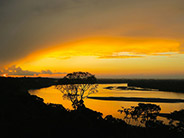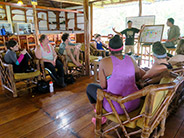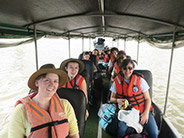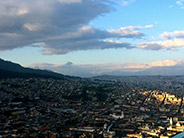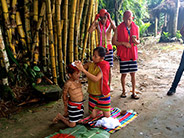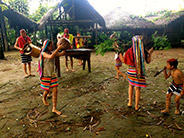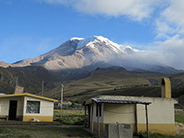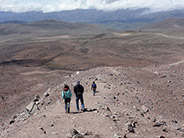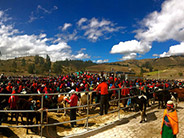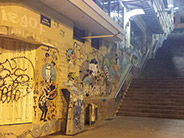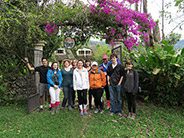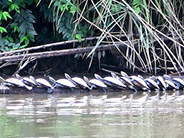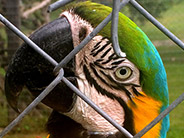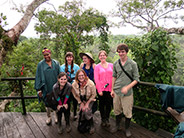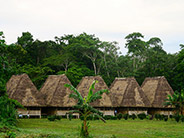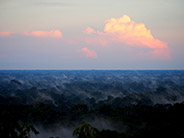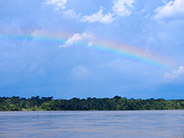Published on Feb. 1, 2015
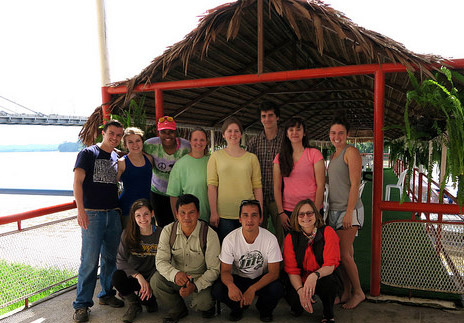
As Madison Hennessy prepared for her study abroad trip to Ecuador she imagined an experience that would be insightful and exciting. She didn’t, however, expect the trip to include climbing a volcano, being spit on by a Tsáchila shaman and eating live beetle larvae.
“The trip was so much more than I expected,” says Hennessy a senior who is majoring in animal science. “There was really something for everyone.”
This year was the first year for the Ecuador study abroad trip offered through MU’s Honors College. The scope of the trip, which took place over Winter Break, was to provide students with an understanding of the nature and importance of biodiversity, the ways in which humans use biodiversity and the importance of local communities to sustainable development of tropical resources.
“Ecuador is one of the most biodiverse places on the planet,” says Heidi Appel, senior associate director of the Honors College and the trip’s coordinator. “It is a great place to talk biodiversity and what we need to consider when conserving it.”

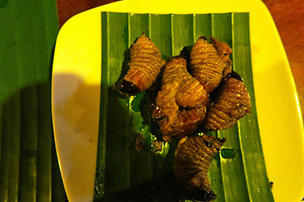
When Appel joined the Honors College in 2012, she was tasked with creating a special study abroad opportunity. She succeeded with a trip that included walks through the rainforest, a hike up Mount Chimborazo and visits to towns and villages throughout Ecuador. Appel taught the course along with David Cevallos, an Ecuadorian guide who helped with many of the logistics and served as a translator.
“I have read so much about life and diversity and particular tropical species,” junior biological sciences major Micah Fletcher says, “but seeing it in person gave me a completely different perspective on all of it. It feels more real, more believable now.”
During the trip, the students visited with local residents and biodiversity experts to discuss Ecuador’s unique biodiversity and the challenges and conflicts they have encountered in trying to preserve it. They visited La Hesperia—a sustainable conservation operation located in the Andes—and toured the Incan ruins of Ingapirca. In Guamote, the group attended an agriculture market where everything, from sheep to llamas to guinea pigs, was being traded.
The trip included multiple hikes through the rainforest and mountains, sometimes taking place at night in search of insects and spiders that inhabited the forest. The hikes were anything but a gentle stroll; however, the payoff to the rigorous walks was well worth it.
“The hikes we did throughout the trip were my favorite part,” Jacqueline Land, a senior English and film studies major, says. “We went on an amazing night walk in the Amazon where we turned our flashlights off and looked up at the stars. They were so bright at the equator.”
One of the walks ended at an observation tower that overlooked the jungle and provided an extraordinary view of the sunset.
“I don’t think there was a single time during the entire trip when I couldn’t step outside and see something unbelievably beautiful,” Fletcher says.
And then, there was the cleansing ritual in the small community of Tsáchilas. The ceremony included the students getting brushed with aromatic branches, hit on the head with small rocks and spit on with a cocktail mist of medicinal plants. It was a bit unsettling for some. Later that night, the group attended a campfire where a Tsáchila shaman and a visiting Amazonian shaman shared stories which were told in the Kichwa language, then translated into Spanish before being translated into English.
“It was certainly socially and culturally challenging,” Fletcher says. “I don’t speak much Spanish so I had to rely on our guides and my fellow trip mates to help me interact with the people I encountered.”
Towards the end of the two-week trip, the group flew over the Andes and then took a two-hour motorized canoe ride to Yasuni National Park. As they gathered in the Añangu community, the students were served beetle larvae called contacuro. While most of the group gave the fried larvae a try, only Hennessey and Fletcher were able to drum up enough courage to eat live larvae.
“Afterward, we stargazed at what seemed like 100 times the stars we see in Missouri staring back at us from the Amazonian sky,” Hennessy says. “It really cannot get much better than that—except maybe if the beetle larvae happened to be made of chocolate.”


